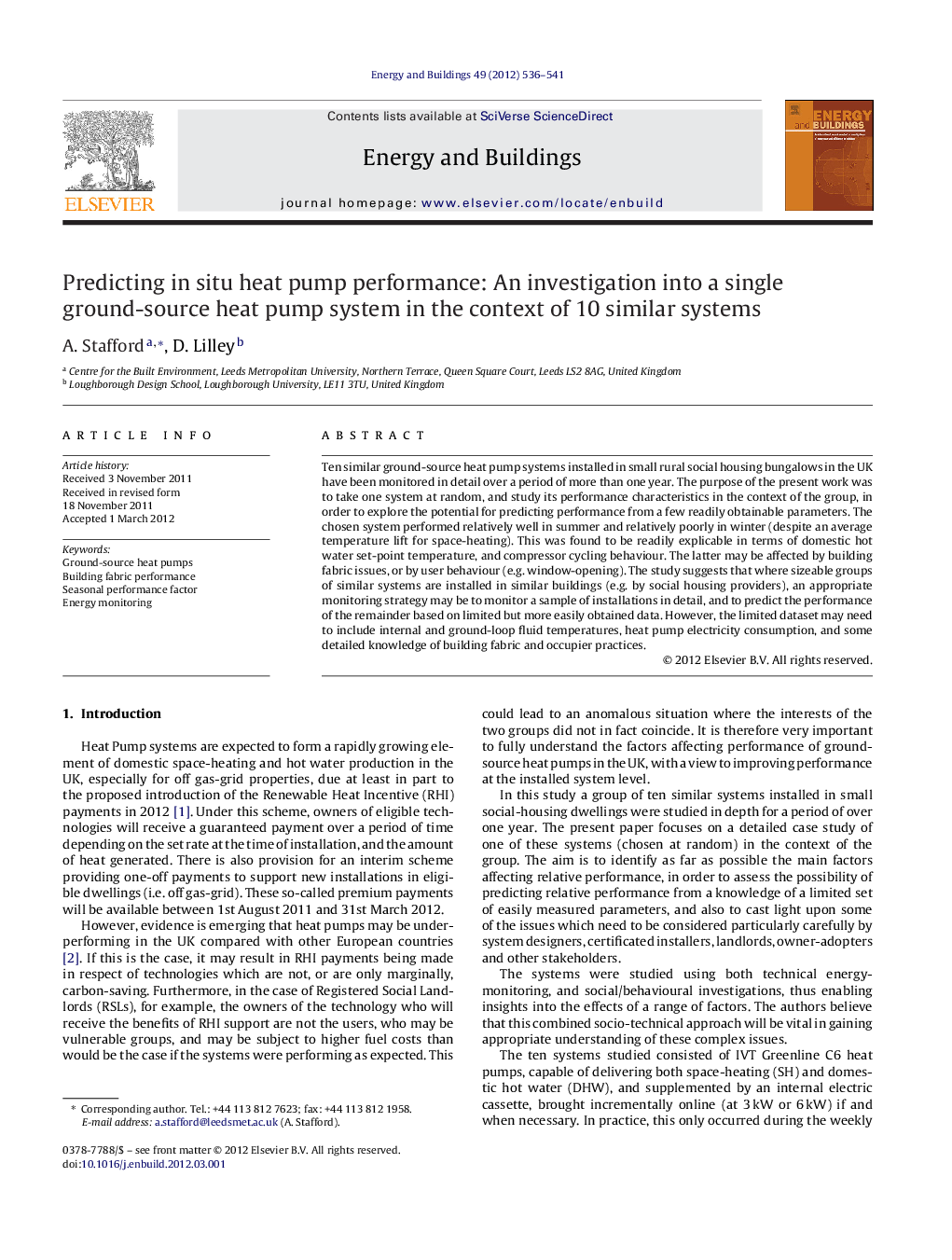| کد مقاله | کد نشریه | سال انتشار | مقاله انگلیسی | نسخه تمام متن |
|---|---|---|---|---|
| 263962 | 504086 | 2012 | 6 صفحه PDF | دانلود رایگان |

Ten similar ground-source heat pump systems installed in small rural social housing bungalows in the UK have been monitored in detail over a period of more than one year. The purpose of the present work was to take one system at random, and study its performance characteristics in the context of the group, in order to explore the potential for predicting performance from a few readily obtainable parameters. The chosen system performed relatively well in summer and relatively poorly in winter (despite an average temperature lift for space-heating). This was found to be readily explicable in terms of domestic hot water set-point temperature, and compressor cycling behaviour. The latter may be affected by building fabric issues, or by user behaviour (e.g. window-opening). The study suggests that where sizeable groups of similar systems are installed in similar buildings (e.g. by social housing providers), an appropriate monitoring strategy may be to monitor a sample of installations in detail, and to predict the performance of the remainder based on limited but more easily obtained data. However, the limited dataset may need to include internal and ground-loop fluid temperatures, heat pump electricity consumption, and some detailed knowledge of building fabric and occupier practices.
► The performance of one GSHP system was studied in the context of 10 similar systems.
► Relative performance could be explained in terms of easily measured quantities.
► Building fabric and/or behavioural issues could be identified.
► Scope may exist for developing a simplified monitoring methodology.
Journal: Energy and Buildings - Volume 49, June 2012, Pages 536–541